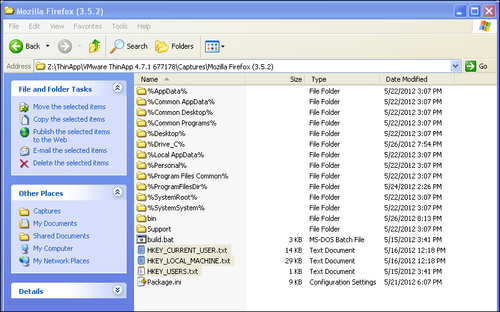The virtual registry exists in three versions as well. Within the project folder you will find the virtual registry represented by three clear text files, HKEY_CURRENT_USER.txt, HKEY_LOCAL_MACHINE.txt, and HKEY_USERS.txt.

When you run build.bat the content of these registry files are compiled into the package as read-only versions. When you use the package, the read and write version is created in the sandbox.
You may ask yourself where HKEY_CLASSES_ROOT is. HKEY_CLASSES_ROOT is a merged view of HKEY_LOCAL_MACHINE\Software\Classes and HKEY_CURRENT_USER\Software\Classes. HKEY_CLASSES_ROOT will be created dynamically during the launch of your package, in a similar way to how the Windows OS generates HKEY_CLASSES_ROOT at boot time.
The file database is included in the virtual registry. You can see it while running regedit.exe within your virtual environment.

The ThinApp filesystem database can be viewed when running Registry Editor within the virtualized environment.



